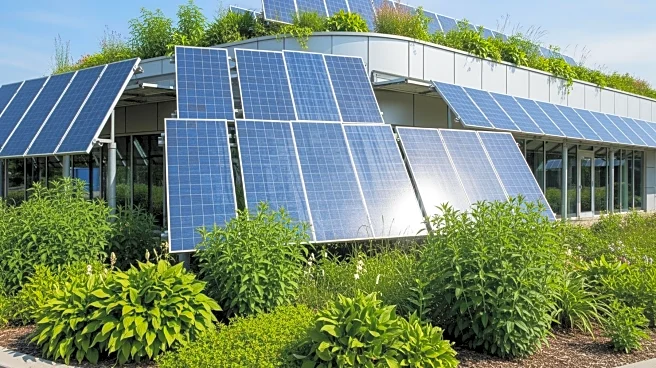What's Happening?
Researchers have discovered that groundnut shell waste can be chemically treated to serve as an eco-friendly reinforcement for concrete, improving its resistance to structural cracking and simulated blast
impacts. The study, published in Scientific Reports, highlights the potential of groundnut shell fibers to enhance the mechanical properties and blast performance of high-performance concrete (HPC). Traditionally, materials like polypropylene and steel fibers are used to control early-age cracking in concrete, but these can lead to self-desiccation and shrinkage cracking due to low water-cement ratios. Groundnut shell fibers, rich in cellulose, hemicellulose, and lignin, offer a biodegradable and cost-effective alternative. The study involved treating the fibers with alkali, silane, and acetylation processes, and testing their impact on concrete's strength and blast resistance.
Why It's Important?
The use of groundnut shell waste in concrete presents a sustainable solution to enhance the durability and blast resistance of construction materials. This innovation could significantly impact the construction industry by providing a cost-effective and environmentally friendly alternative to traditional reinforcement materials. The ability to improve concrete's mechanical properties and resistance to blast impacts could lead to safer and more resilient infrastructure, particularly in areas prone to natural disasters or other high-impact events. Additionally, utilizing agricultural waste in construction aligns with broader sustainability goals, reducing waste and promoting the use of renewable resources.
What's Next?
Further research and large-scale experimental validation are needed to confirm the real-world applicability of groundnut shell fibers in concrete reinforcement. If successful, this could lead to widespread adoption in the construction industry, potentially influencing building codes and standards. Stakeholders such as construction companies, environmental groups, and policymakers may take interest in this development, considering its implications for sustainable building practices and waste management.
Beyond the Headlines
The study highlights the potential for agricultural waste to play a significant role in sustainable construction practices. This approach not only addresses the issue of waste management but also contributes to the development of more resilient infrastructure. The chemical treatment of natural fibers like groundnut shells could pave the way for further exploration of other agricultural byproducts in construction, promoting innovation and sustainability in the industry.











